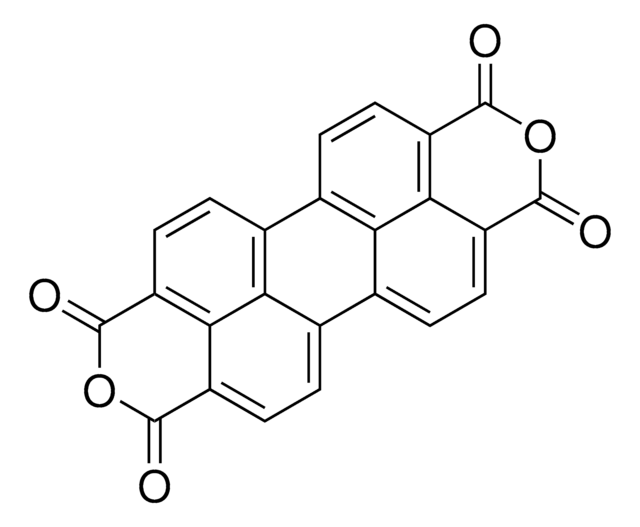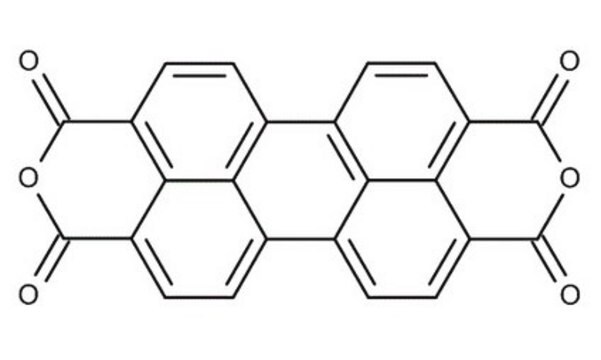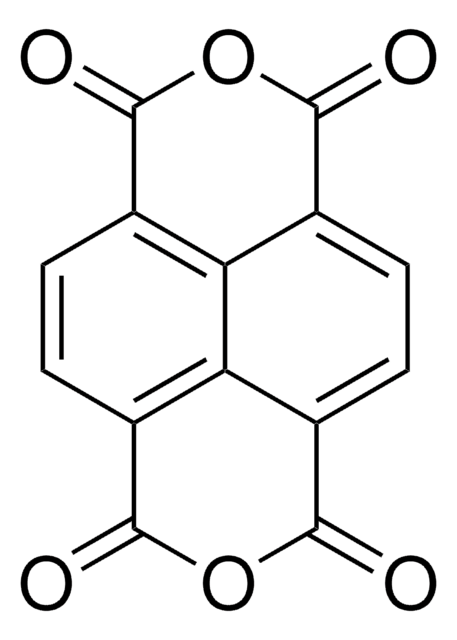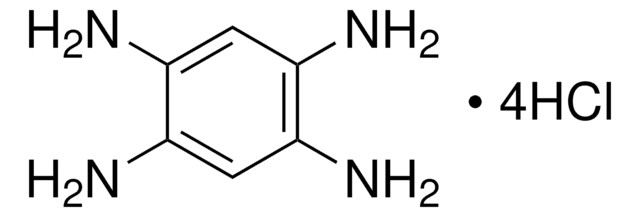932760
3,4,9,10-Perylenetetracarboxylic dianhydride
Sinónimos:
PTCDA, Perylenetetracarboxylic acid dianhydride, Perylene-3,4,9,10-tetracarboxylic dianhydride, Pigment Red 224
About This Item
Productos recomendados
Análisis
99% (sublimed)
Nivel de calidad
mp
>300 °C
solubilidad
DMSO: slightly soluble
Energía orbital
HOMO 5.85 eV
LUMO 3.9 eV
InChI
1S/C24H8O6/c25-21-13-5-1-9-10-2-6-15-20-16(24(28)30-23(15)27)8-4-12(18(10)20)11-3-7-14(22(26)29-21)19(13)17(9)11/h1-8H
Clave InChI
CLYVDMAATCIVBF-UHFFFAOYSA-N
¿Está buscando productos similares? Visita Guía de comparación de productos
Aplicación
The compound has attracted much interest as an organic semiconductor. It has potential applications in organic and molecular electronics, and typically used as an archetype molecular compound. PTCDA shares many properties with conventional semiconductors (with their delocalized electronic states), and insulator-like organic molecular crystals (OMCs) (with their large absorption oscillator strengths, excitonic self-trapping, polaron-assisted conduction, etc.). That is due to extremely close π-π stacking, an unusually small intermolecular distance of only 3.21 A. Among its applications, it is important to highlight the latest focus on environment monitoring, self-assembly and photocatalysis.
Código de clase de almacenamiento
11 - Combustible Solids
Clase de riesgo para el agua (WGK)
WGK 1
Elija entre una de las versiones más recientes:
Certificados de análisis (COA)
Lo sentimos, en este momento no disponemos de COAs para este producto en línea.
Si necesita más asistencia, póngase en contacto con Atención al cliente
¿Ya tiene este producto?
Encuentre la documentación para los productos que ha comprado recientemente en la Biblioteca de documentos.
Nuestro equipo de científicos tiene experiencia en todas las áreas de investigación: Ciencias de la vida, Ciencia de los materiales, Síntesis química, Cromatografía, Analítica y muchas otras.
Póngase en contacto con el Servicio técnico





![9,9-Bis[4-[(4-ethenylphenyl)methoxy]phenyl]-N2,N7-di-1-naphthalenyl-N2,N7-diphenyl-9H-Fluorene-2,7-diamine ≥98% (HPLC)](/deepweb/assets/sigmaaldrich/product/structures/217/694/0386f9cf-a92c-48f3-bde7-f7a23d7cdc3a/640/0386f9cf-a92c-48f3-bde7-f7a23d7cdc3a.png)
![Benz[b]anthracene 98%](/deepweb/assets/sigmaaldrich/product/structures/197/885/3a015625-5e09-4f15-8b17-4cc285304fc7/640/3a015625-5e09-4f15-8b17-4cc285304fc7.png)